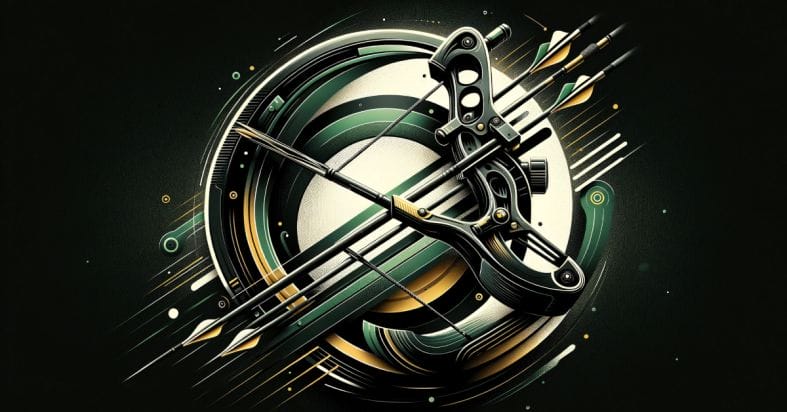Most traditional bowhunters understand the importance of selecting the right equipment to enhance their hunting experience. With respect to choosing a bow quiver, there are several factors to consider to ensure it meets the needs of a traditional bowhunter. From material and design to compatibility with various bow types, the right bow quiver can make a significant difference in the field. In this blog post, we will discuss the key features and benefits of bow quivers specifically tailored for traditional bowhunters, helping you make an informed decision for your next hunting excursion.
Understanding Quivers
History and Evolution of Bow Quivers
Ancient civilizations utilized quivers to hold arrows for hunting and warfare. These early forms varied from simple pouches to more sophisticated designs made from animal hides or wood. Over time, quivers evolved alongside advancements in bow technology, with different cultures developing unique styles to suit their specific needs. Understanding the history of quivers provides valuable insight into their significance in traditional archery.
Types of Traditional Quivers
Traditional quivers come in various styles, each with its own advantages and characteristics. Whether you prefer a back, side, or bow quiver, there is a type that suits your personal shooting style and preferences. Recognizing the differences between these quivers can help you choose the best one for your needs.
| Quiver Type | Description |
|---|---|
| Back Quiver | Worn on the back for easy access to arrows while moving. |
| Side Quiver | Attached to the belt or hip for quick and convenient arrow retrieval. |
| Bow Quiver | Mounted on the bow for a compact and streamlined arrow storage solution. |
| Traditional Quiver | Reflects historical designs and materials for a classic look and feel. |
| Pocket Quiver | Small and minimalist design for carrying a limited number of arrows discreetly. |
When choosing a traditional quiver, consider factors such as mobility, comfort, and style to find the perfect match for your archery adventures. Recognizing the unique features of each quiver type will help you make an informed decision that enhances your overall bowhunting experience.
Selecting the Right Quiver for You
Assessing Your Hunting Style and Needs
One of the key factors to consider when selecting a bow quiver is assessing your hunting style and needs. Are you a spot-and-stalk hunter who needs quick and easy access to your arrows? Or do you prefer sitting in a treestand with your arrows securely stored but within reach? Understanding how you hunt will help you choose a quiver that best suits your individual requirements.
Quiver Capacity and Arrow Accessibility
Selecting a quiver with the right capacity and arrow accessibility is crucial. Quivers come in various sizes, from holding just a few arrows to larger models that can carry a dozen or more. Consider how many arrows you typically use on a hunt and choose a quiver that can accommodate that number comfortably. Additionally, think about how easily you can access your arrows in different hunting situations – whether you need them close at hand or prefer them securely stored.
When assessing your needs, keep in mind factors like the terrain you’ll be hunting in, the types of shots you’ll be taking, and how much weight you’re comfortable carrying. Ultimately, the right quiver for you will strike a balance between capacity, accessibility, and convenience based on your unique hunting style and preferences.
Material and Craftsmanship of Traditional Quivers
The Importance of Durability and Quality
Traditional bowhunters understand the importance of durability and quality when it comes to their equipment. A well-crafted quiver can make the difference between success and failure in the field. It needs to withstand the rigors of the hunt and protect your arrows effectively.
Popular Materials Used in Quiver Making
Material choice plays a crucial role in the overall quality and performance of a traditional quiver. Leather, a popular choice for its durability and classic look, offers excellent protection for arrows. Other materials like canvas and wool also make sturdy and reliable quivers.
To ensure a quiver meets the demands of the traditional bowhunter, craftsmanship is key. Each material used must be carefully selected and expertly crafted to create a quiver that not only looks good but also performs well in the field. Bow quivers for traditional bowhunting require a certain level of skill and attention to detail in their construction to stand the test of time.
Tips and Best Practices
Maintaining and Caring for Your Quiver
Any traditional bowhunter knows the importance of keeping their equipment in top condition. To ensure your bow quiver serves you well for years to come, regularly inspect it for any signs of wear and tear. Clean it with a damp cloth after each use to prevent dirt and debris from causing damage. Store it in a cool, dry place to avoid any potential warping or weakening of materials.
Expert Tips for Seamless Arrow Handling
To enhance your arrow-handling skills, consider the following expert tips. When inserting arrows into your bow quiver, make sure the fletching is facing outward to prevent any damage. Practice drawing and nocking arrows smoothly and quickly to improve your shooting efficiency. After a shooting session, inspect your arrows for any signs of damage and replace any damaged arrows to maintain consistent performance.
- Ensure fletching faces outward when storing arrows in quiver.
- Practice drawing and nocking arrows smoothly and quickly.
- Inspect arrows for damage after shooting sessions.
Conclusion
The use of bow quivers for the traditional bowhunter is a practical and efficient way to carry arrows while hunting. Bow quivers eliminate the need for a separate quiver and provide easy access to arrows when needed. With various options available in the market, traditional bowhunters can choose a quiver that suits their style and preferences. Considerations such as weight, noise level, and ease of access should be taken into account when selecting a bow quiver. Overall, bow quivers offer convenience and functionality for traditional bowhunters, enhancing their hunting experience in the field.


